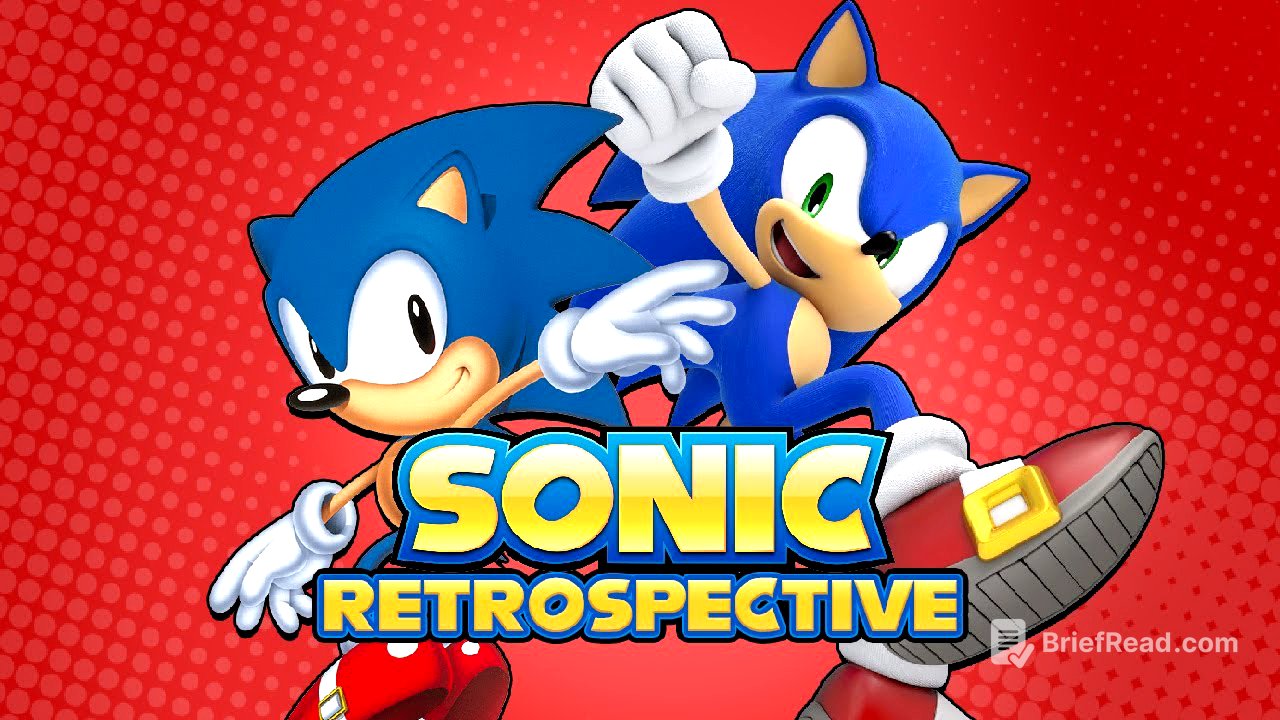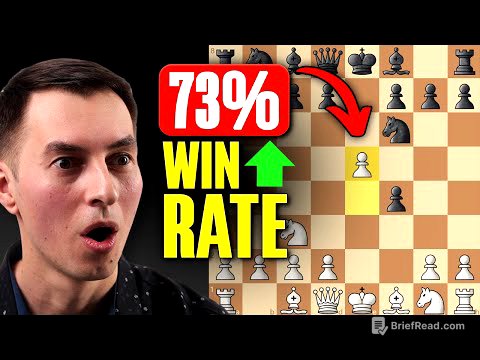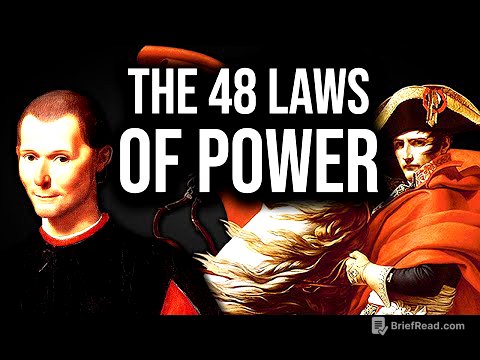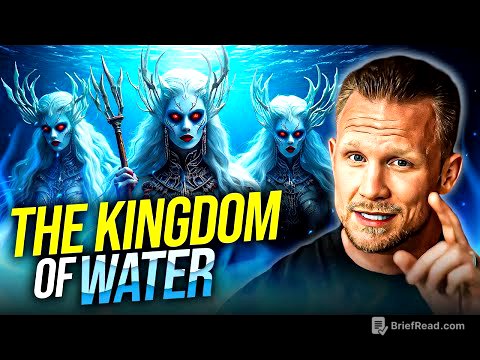TLDR;
This video is a comprehensive retrospective of the main series Sonic games, from the original Sonic the Hedgehog to Sonic Lost World. It explores the evolution of the gameplay, graphics, and story, while also providing critical analysis and comparisons to other iconic franchises like Mario. The video also touches on the cultural impact of Sonic and the reasons behind the series' enduring appeal.
- The origins and evolution of Sonic the Hedgehog are examined, from its inception as a competitor to Mario to its current status in the gaming community.
- Key aspects of each game, including level design, gameplay mechanics, and visual style, are analyzed.
- The video explores the cultural impact of Sonic, including its influence on television, marketing, and even world events.
Introduction [0:02]
The video introduces a retrospective of the main series Sonic games, starting with Sonic the Hedgehog and covering every game up to the current point. The goal is to witness the evolution of the series and critique it as objectively as possible.
Sonic the Hedgehog (1991) [0:52]
Sonic the Hedgehog was created to compete with Mario, designed as an edgy character with shoes based on Michael Jackson, a personality inspired by Bill Clinton, and a villain based on Teddy Roosevelt. The gameplay was inspired by Yuji Naka's experience repeatedly playing World 1-1 of Super Mario Bros. Sonic the Hedgehog was released in 1991 for the Sega Genesis and became an immediate hit, challenging Nintendo's dominance in the game market. Despite its initial success, the Sonic series has become a joke in the gaming community due to inconsistent quality, overly serious plot lines, and unnecessary characters. The first game challenges the player's patience by making them want to go fast, as opposed to testing their knowledge of the level and reaction time.
Sonic the Hedgehog 2 (1992) [7:55]
Following the success of Sonic the Hedgehog, Sega aimed to capitalize on the character with Sonic the Hedgehog 2. Sega of America and Japan collaborated on the sequel, introducing a new sidekick, Miles "Tails" Prower. Sonic 2 was among the first games to have a worldwide release date. New features included the Spin Dash, two-player mode, speed boosters, a new special stage, and the Super Sonic transformation. The game's vibrant visuals, branching pathways, and increased sense of speed were immediately apparent. Water levels were improved, and the game introduced speed boosts, which have since become a divisive element among fans. Aquatic Ruin Zone's parallax scrolling can be disorienting. Casino Night Zone became a series staple. Metropolis Zone is one of the hardest levels in the series. Death Egg Zone features two difficult bosses with no rings. Sonic 2 laid the groundwork for future games in the series, with its diverse level selection and new features.
Sonic CD (1993) [17:28]
To regain a competitive edge, Sega developed the Sega CD, an accessory for the Sega Genesis that could play exclusive games with full-motion video and CD-quality audio. Sonic CD was released in the fall of 1993, featuring full-motion video cutscenes, a time-traveling mechanic, the Super Peel-Out move, eight new special stages, and the introduction of Amy Rose and Metal Sonic. The time-traveling mechanic allows Sonic to travel to the past and future to destroy generators, affecting the game's ending. The game's vibrant colors and music match the unique color palette. The boss battles are unique and creative. The time travel mechanic adds depth, but the author doesn't care about it. Sonic CD is visually striking and uniquely designed.
Sonic the Hedgehog 3 (1994) [25:03]
Sega of Japan began work on Sonic 3 with the goal of creating a game bigger and better than Sonic 2. The game focused on 3D gameplay mechanics and introduced a new character, Knuckles. Due to memory storage costs and a McDonald's promotional line, Sonic 3 was released in two parts. New features included the ability to save game progress, a boss battle for every act, control of Tails' flying ability, an instant shield, elemental shields, and a new special stage. Michael Jackson contributed to the music production. The story begins after Sonic 2, with Sonic and Tails investigating an island where Knuckles steals the Chaos Emeralds. Visually, Sonic 3 is the worst of the classic games, with a cartoony design. The game attempts to heighten the sense of adventure.
Sonic & Knuckles (1994) [32:32]
Sonic & Knuckles was released as the second part of Sonic 3, utilizing lock-on technology. New features included playing as Knuckles, an arcade-style special stage, seven new Super Emeralds, alternative music, and six new zones. Mushroom Hill Zone introduces the Sonic & Knuckles portion of the game, with challenging enemies. Flying Battery Zone features fire switches, enemies, and electrical hazards. Sandopolis Zone has a desert level feel with quicksand and a dark act with light switches. Lava Reef Zone features pulleys and moving platforms to avoid lava. Hidden Palace Zone leads to Sky Sanctuary Zone, where Sonic runs towards the Death Egg. Death Egg Zone features transitioning gravity. Sonic 3 & Knuckles set out to be bigger and better than Sonic 2, but the core gameplay and visual style of Sonic 2 are better.
Sonic Adventure (1998) [40:26]
After the commercial failure of the Sega Saturn, Sega released the Dreamcast in 1999, along with Sonic Adventure. The game received critical acclaim but has not aged well. New features include redesigned characters, new characters, a new antagonist, six interconnecting storylines, full story with in-game cutscenes and voice-acted dialogue, the Chao Garden, and an interactive overworld. Sonic's story is straightforward, with action-adventure gameplay. Tails' story gives him a character arc, proving his independence. Knuckles' story is centered around his dead culture, but he never has a realization about it. Amy's story is about her becoming independent, but she is painted as weaker than the other characters. Big the Cat's story is about love. Gamma's story is the heart and soul of the game, with a clever take on freedom. The final Super Sonic story brings all the visions together. Sonic Adventure was ambitious but flawed, with atrocious animation, camera, and voice acting.
Sonic Adventure 2 (2001) [58:31]
Sonic Adventure 2 was developed by Sega of America to bring Sonic back to his roots and focus on action. The game features two-player versus gameplay, an expanded Chao Garden, the ability to play as Doctor Eggman, two new characters, new abilities, and two interconnecting storylines. The theme is light versus dark. The hero story starts with Sonic escaping from a military helicopter. The dark story features Eggman breaking into a GUN facility and finding Shadow. The final story involves a secret message from Dr. Eggman's grandfather, revealing a plan to crash the Ark into Earth. The story is fun but has inconsistencies. The character interactions are enjoyable. The soundtrack is one of the best in the series. The gameplay is broken down into three types: Sonic and Shadow, Rouge and Knuckles, and Eggman and Tails. The Chao Garden offers replayability. Sonic Adventure 2 was the last Sonic game released for a Sega console.
Sonic Heroes (2003) [1:17:50]
Sonic Heroes was a soft reboot for the series, with a classic art design and a large cast of characters. New features include team-based gameplay with four different teams and three different archetypes: speed, power, and flight. The plot involves Team Sonic, Team Dark, Team Rose, and Team Chaotix. The presentation is better than Sonic Adventure and Adventure 2. Despite having 12 characters, there are only three different playstyles. The speed characters are too fast, the flying characters are slow, and the power characters are integral to the gameplay. The level length is absurdly long. The game has amazing potential, but the unpolished controls, recycled content, and pacing issues kill the experience.
Sonic the Hedgehog (2006) [1:31:41]
Sonic the Hedgehog (2006) was planned as the definitive version of Sonic, combining the best aspects of the adventure era. New features include a new character named Silver, subtle redesigns for the cast, and a switch to voice actors from Sonic X. The story is split into three episodes: Sonic, Silver, and Shadow. Sonic's story involves rescuing Princess Elise from Eggman. Shadow's story involves rescuing Rouge and confronting Mephiles. Silver's story involves going back in time to kill Sonic. The endgame involves defeating Solaris, the god of time. The story is nonsensical, boring, and takes itself too seriously. The gameplay is buggy, with slowdown, poor camera, and recycled levels. The game is not enjoyable and has become the negative stereotype of Sonic games.
Sonic Unleashed (2008) [1:57:55]
After the failure of Sonic the Hedgehog (2006), Sega gave Sonic Team free rein to produce the next Sonic game. Sonic Unleashed features the Hedgehog Engine, a uniform Sonic model, and real-world-inspired locations. The game introduces the Werehog, a transformation Sonic undergoes at night. New features include a song by Bowling For Soup, revamped gameplay, and a completely new play style as the Werehog. The story involves Sonic and Chip restoring the world after Eggman shatters it. The daytime stages are fast-paced and action-packed, while the nighttime stages are slow and repetitive. The Werehog concept is not fundamentally broken, but the execution is flawed. The game forces replayability by requiring Sun and Moon medals to unlock stages.
Sonic the Hedgehog 4: Episode I (2010) [2:15:32]
Project Needle Mouse aimed to give fans from the Genesis era a game they could appreciate. The title of the game was announced as Sonic the Hedgehog 4: Episode I. The game is not a love letter to the classics and is more akin to bubblegum pop. New features include being able to select stages and acts in any order. The story is Sonic versus Eggman. Each level is visually modeled after an older stage. The homing attack is overused, and the gameplay feels cheap. The game is obnoxiously easy and a dull experience.
Sonic the Hedgehog 4: Episode II (2012) [2:21:19]
Sonic the Hedgehog 4: Episode II was released a year and a half after Episode I. If you collected all seven Chaos Emeralds in Episode I, a silhouette of Metal Sonic was shown. There was a lock-on bonus if you owned both episodes. The game is no longer cel-shaded and looks good. Episode II doesn't use themes from past Sonic games, except for a single stage. The game takes elements from Sonic 2 and Sonic CD. Sonic and Tails can do tag-team moves. The game is significantly harder than Episode I. Sonic 4: Episode II fixed a lot of the problems with Sonic's control, but the levels rarely allow you to experience the fixed control. The original plan was to do a complete trilogy, but plans for Episode III were scrapped.
Sonic Colors (2010) [2:28:07]
Sonic Colors was a response to the criticism of the gimmicky Sonic games and the newly gained audience from the Wii. The game was designed to appeal to the Mario fanbase. The storyline was written to appeal to a younger fanbase. New features include a new voice cast and power-ups called the Wisps. The story involves Sonic and Tails sneaking into Eggman's interstellar amusement park. The plot is bland, and the humor doesn't land. The game is gorgeous, with bright colors and personality. The game strips Sonic of what makes him Sonic but builds a solid 2D platforming experience. The Wisps add an extra layer to the game. The level lengths are shortened.
Sonic Generations (2011) [2:37:09]
Sonic Generations began as a tribute to the Sonic franchise. The plan was to bring back and remix levels from every main series Sonic game. Fan surveys were conducted to find out which zones were the most loved. Old stages would be remixed into 3D, and 3D stages would be remixed into classic 2D. Two different playstyles featuring two different Sonics would be available. The story involves Sonic's birthday party, where an evil monster captures everyone. Sonic discovers that time has been split apart. The Sonics rescue their friends. The story is just created to justify what happens in the game. The levels are high quality, but there is a lack of diversity. The 2D stages feel like classic 2D Sonic levels. The 3D stages are refined. The game is short, but it maintains momentum throughout the entire game.
Sonic Lost World (2013) [2:46:58]
Sonic Lost World was created in collaboration with Sega and Nintendo. The game experimented with level design and new moves but was an incredibly simplified experience. The storyline was written to appeal to a younger fanbase. The plot involves Sonic and Tails following Eggman to the Lost Hex, where they encounter the Deadly Six. The story is generic and stereotypical. The gameplay has moved heavily away from a focus on speed to a more traditional platforming style. The game features a tubular or cylindrical level design with a centralized gravity. The game relies too heavily on past games but creates a generic version of the Sonic universe. The game features an overworld in a similar style to the Super Mario Bros series. The game is not exciting and forces replayability.









